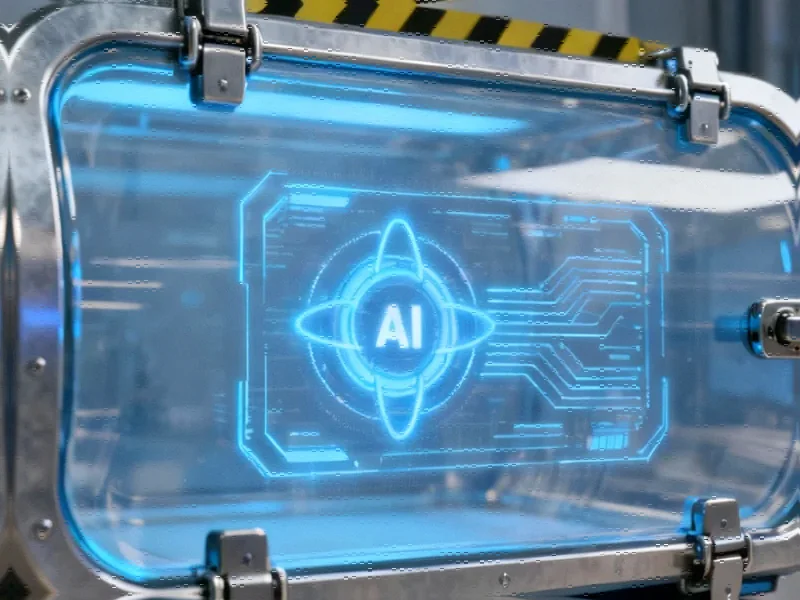The New Frontier of Scientific Programming
Google researchers have pioneered an innovative approach that uses artificial intelligence to evolve and enhance scientific software through what they call “evolutionary trees” of code. This groundbreaking methodology represents a significant shift in how we approach scientific computing, potentially reducing development time from months to mere hours while producing software that frequently outperforms human-written counterparts.
Table of Contents
How the Evolutionary Process Works
The system builds evolutionary trees where each “node” represents an individual program evaluated against standard benchmarks. Researchers prompt large language models to improve existing nodes by feeding them research paper summaries, specialized knowledge, and contextual information. This creates new, potentially better versions of software in an automated discovery process.
The methodology allows for open-ended exploration, where the AI can duplicate and mutate any node in the tree, not just the best-performing ones. This approach enables the system to take unexpected, meandering paths toward optimization that might not occur to human programmers constrained by conventional thinking patterns., according to technology trends
Proven Success Across Multiple Scientific Domains
Google’s team tested their evolutionary approach across six distinct scientific domains with remarkable results:, according to related coverage
- Genomics Data Integration: The system generated 40 programs that outperformed ComBat, the previous best human-written program for batch integration of single-cell RNA-sequencing data. The top-performing evolved program showed a 14% improvement over the human benchmark.
- Pandemic Prediction: In COVID-19 hospitalization forecasting across US states, the evolved predictors outperformed all other models in the COVID-19 Forecast Hub repository.
- Satellite Image Analysis: The AI-evolved programs demonstrated superior performance in labeling and analyzing satellite imagery.
- Neuroscience Applications: Programs for predicting neural activity in zebrafish showed measurable improvements over existing solutions.
- Time-Series Forecasting: The system excelled at projecting how data points progress over intervals ranging from seconds to years across various domains.
- Calculus Problem Solving: In perhaps the most striking demonstration, evolved variations of a common calculus function solved 17 out of 19 problems that had stumped the original program.
Industry Perspectives and Expert Reactions
Jenny Zhang, a computer scientist at the University of British Columbia who has worked with similar methods, expressed enthusiasm about the approach. “It gives me hope that the research direction that I’m doing, when scaled up, can make a big impact,” she noted, highlighting the potential for evolutionary methods to drive breakthroughs across scientific fields.
Evan Johnson, a biostatistician and director of the Center for Data Science at Rutgers University, provided context about the practical implications. “When I’m actually focused on science, 90% of my time is coding,” he revealed, underscoring how automated approaches could dramatically accelerate research timelines.
Addressing Concerns and Limitations
Despite the promising results, experts caution that automated code generation systems present unique challenges. Johnson highlighted two primary concerns applicable to any AI-driven coding system:
- Intellectual Property Risks: AI systems might inadvertently violate software licenses through plagiarism or improper code reuse.
- Code Comprehension: Users who don’t fully understand automatically generated code may encounter fragility or reliability issues in production environments.
Xutao Wang, a computational biologist at Rutgers, offered a balanced perspective: “Let AI help you make a better solution instead of creating one for you,” suggesting that the most effective approach might combine human oversight with AI assistance.
The Future of Scientific Software Development
Perhaps most intriguing is the system’s demonstrated ability to move beyond simple iteration and recombination. The research paper notes that some evolved programs for pandemic prediction demonstrated “significant conceptual leaps” beyond existing models, suggesting that evolutionary approaches might eventually surpass human creativity in specific domains.
Zhang draws parallels with AlphaGo’s development, where later versions learned entirely through self-play rather than human guidance. Similarly, with sufficient computing resources, scientific software evolution might eventually abandon human constraints altogether, potentially discovering novel approaches that human programmers would never conceive.
While the Google team declined to comment extensively due to the unpublished nature of their research, they confirmed they’re working to make the system available to the broader scientific community. Many of the optimized tools are already accessible online, offering researchers early access to this transformative approach to software development., as as previously reported
The implications for industrial and scientific computing are profound. As organizations increasingly rely on sophisticated software for research, development, and operations, AI-evolved code could become a standard tool in the computational scientist’s arsenal, accelerating discovery across countless domains from pharmaceuticals to materials science to climate modeling.
Related Articles You May Find Interesting
- AI Models Develop ‘Cognitive Decline’ From Poor-Quality Training Data, Study War
- NuScale Power Stock Shows Bullish Signals Despite Recent Pullback
- OpenAI’s ChatGPT Atlas Browser Redefines Web Navigation with Built-In AI Assista
- Unlocking the Proteoform Universe: How Next-Gen Mass Spectrometry Is Decoding Ce
- The Enterprise-Grade Search Revolution: Why Businesses Are Ditching Mainstream S
References & Further Reading
This article draws from multiple authoritative sources. For more information, please consult:
- https://research.google/blog/accelerating-scientific-discovery-with-ai-powered-empirical-software/
- https://google-research.github.io/score/
This article aggregates information from publicly available sources. All trademarks and copyrights belong to their respective owners.
Note: Featured image is for illustrative purposes only and does not represent any specific product, service, or entity mentioned in this article.



